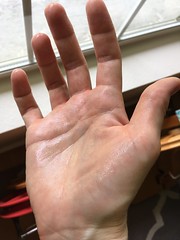Effective Treatments for Sweaty Feet: A Guide to Managing Hyperhidrosis
Many individuals experience excessive sweating, or hyperhidrosis, localized to their feet, a condition that can lead to discomfort and social anxiety. Managing this condition involves understanding the range of treatment options available, which go beyond conventional antiperspirants and home remedies. One such option garnering attention is the use of Botox injections to curb excessive sweating in feet. This hyperhidrosis feet treatment has shown considerable promise in reducing the activity of overactive sweat glands.
Understanding Botox as a Treatment for Sweaty Feet
Botox, widely known for its cosmetic applications, works by temporarily blocking the nerves responsible for activating sweat glands. When targeted towards the feet, it can significantly decrease perspiration, offering relief to those struggling with hyperhidrosis. Typically, the procedure involves multiple injections administered by a qualified specialist, and the effects can last several months. Patients may find it necessary to repeat treatments periodically to maintain results.
Considerations and Potential Risks
While Botox is a valuable option for managing foot hyperhidrosis, it’s essential to consider the potential side effects and discuss these with a healthcare provider. In very rare instances, the procedure might lead to muscle weakness or affect the manner in which nerves function in the treated area. Discussing hyperhidrosis surgery risks is crucial before deciding on a treatment plan, as surgical interventions are also considered for severe cases of hyperhidrosis. Surgery might offer a more permanent solution but comes with its own set of risks and recovery considerations that should be thoroughly understood.
Impact on Quality of Life
Effectively managing sweaty feet not only alleviates physical discomfort but also improves emotional and psychological wellbeing. By exploring treatments like Botox, individuals can regain confidence and enjoy daily activities without the burden of excessive sweating. It’s vital to consult with a medical professional to tailor a treatment plan that suits individual needs and lifestyle, ensuring the best possible outcome.
